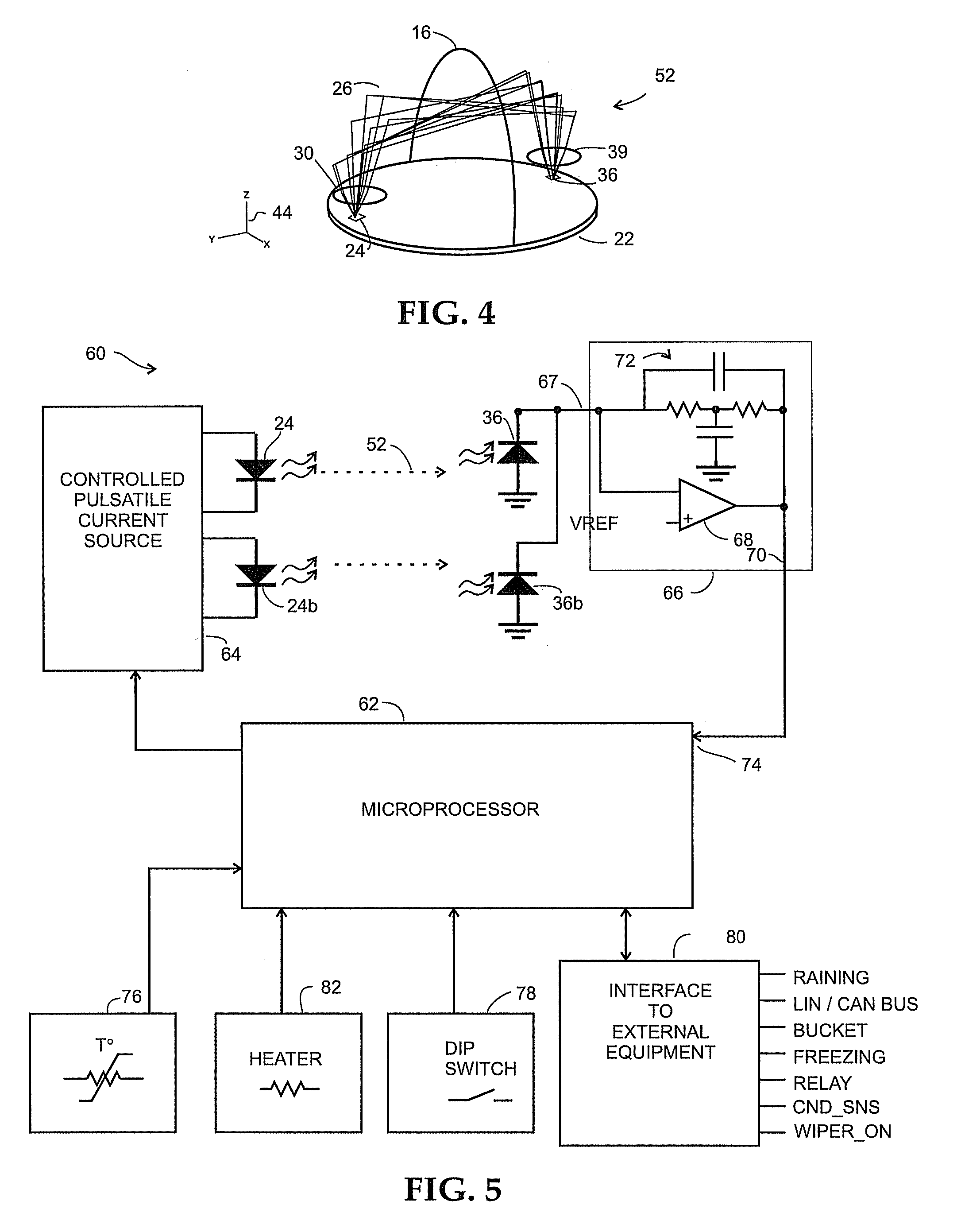Optical moisture sensor
a moisture sensor and optical technology, applied in the direction of instruments, generating/distributing signals, discharge tubes/lamp details, etc., can solve the problems of self-closing skylights and windows, relatively rare, and condensation sensing in heating, cooling and ventilation systems is rarely don
- Summary
- Abstract
- Description
- Claims
- Application Information
AI Technical Summary
Benefits of technology
Problems solved by technology
Method used
Image
Examples
Embodiment Construction
[0022]The present invention relates to a self-contained optical moisture sensor suitable for a wide variety of non-vehicular applications.
[0023]It is to be understood that the invention may assume various alternative orientations and step sequences, except where expressly specified to the contrary. It is also to be understood that the specific devices and processes illustrated in the attached drawings, and described in the following specification are simply exemplary embodiments of the inventive concepts defined in the appended claims. Hence, specific dimensions, directions or other physical characteristics relating to the embodiments disclosed are not to be considered as limiting, unless the claims expressly state otherwise.
[0024]While automotive optical rain sensors are well adapted for the purpose of, for example, windshield wiper control, they generally must be rigidly affixed to glass or some other substrate material and housed in a watertight container. Thus, they are not dire...
PUM
 Login to View More
Login to View More Abstract
Description
Claims
Application Information
 Login to View More
Login to View More - R&D
- Intellectual Property
- Life Sciences
- Materials
- Tech Scout
- Unparalleled Data Quality
- Higher Quality Content
- 60% Fewer Hallucinations
Browse by: Latest US Patents, China's latest patents, Technical Efficacy Thesaurus, Application Domain, Technology Topic, Popular Technical Reports.
© 2025 PatSnap. All rights reserved.Legal|Privacy policy|Modern Slavery Act Transparency Statement|Sitemap|About US| Contact US: help@patsnap.com



